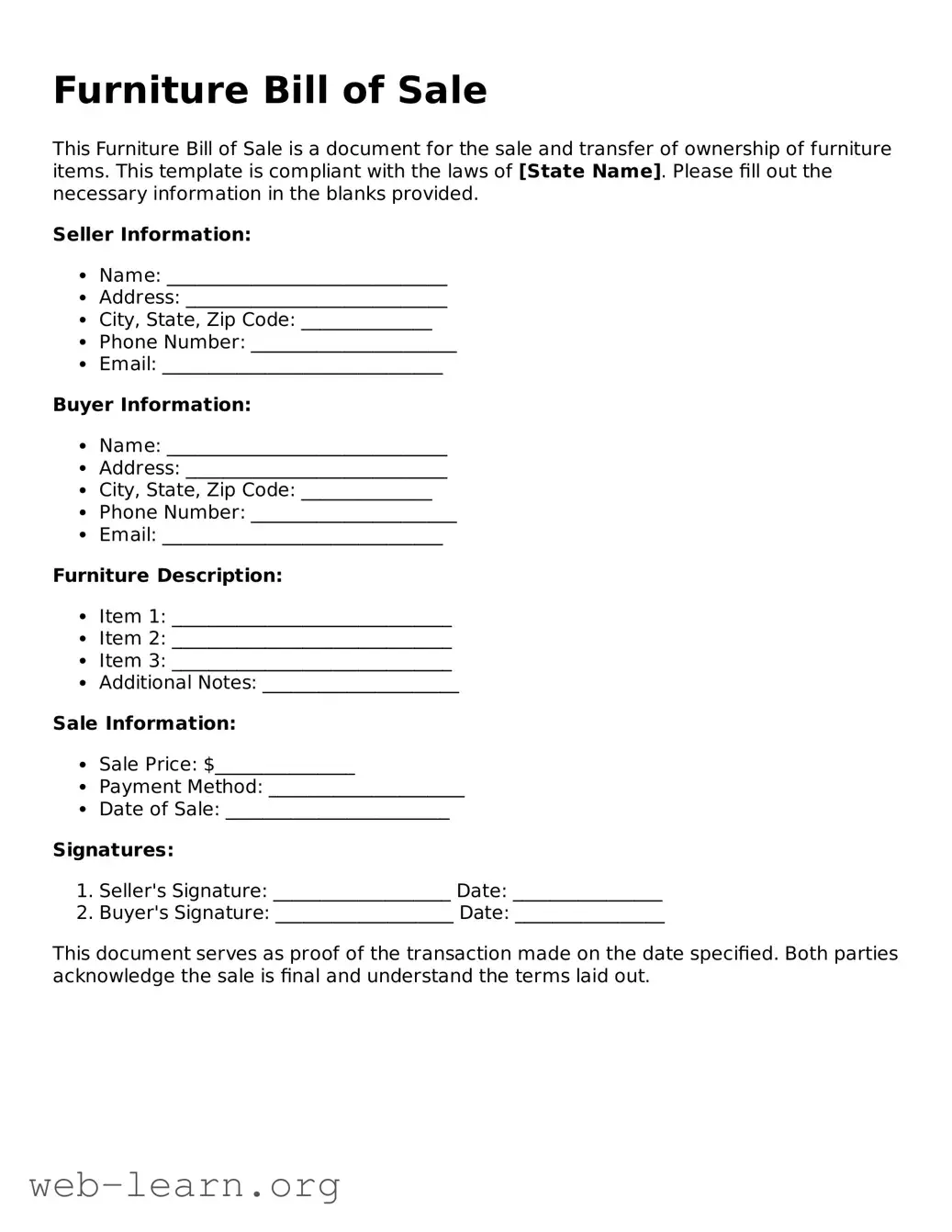When completing a Furniture Bill of Sale form, individuals often overlook critical details that can lead to complications in the future. One common mistake is the failure to include the complete names and addresses of both the seller and the buyer. It is essential that all parties involved are clearly identified; otherwise, proving ownership or resolving disputes may become difficult.
Another frequent error is neglecting to provide a detailed description of the furniture being sold. This description should include specific details such as the type, brand, color, and condition of the items. Without adequate information, ambiguity may arise that can lead to misunderstandings or dissatisfaction after the transaction is completed.
Many individuals also forget to indicate the sale price of the furniture. This omission can create issues, particularly if there is a discrepancy over what was agreed upon. Including a clear and agreed-upon price protects both the seller and the buyer and establishes the basis for any future claims.
In addition to the price, failing to note the date of the transaction is another mistake. Documenting the date helps establish when ownership was transferred and may be relevant for legal or warranty purposes. Individuals should ensure that the date is clearly written to avoid any potential confusion later on.
Signing the bill of sale is a crucial step that many forget. Incomplete forms that lack the required signatures do not legally bind the transaction. Both the seller and the buyer should sign the document to affirm their agreement to the terms laid out in the Bill of Sale.
Some people underestimate the importance of notarization. While not always necessary, having the Bill of Sale notarized adds an extra layer of authenticity and can be beneficial should any disputes arise in the future. Individuals should consider whether notarization is advisable for their specific transaction.
Additionally, people often overlook the need to retain a copy of the completed form. After the sale, both parties should maintain a copy for their records. This documentation can be invaluable if questions or issues arise later concerning the sale.
Another misstep involves skipping the warranty or “as-is” clause. Including this clause clarifies whether the seller is guaranteeing the condition of the furniture or if the buyer accepts it in its current state. The absence of such wording can result in unexpected obligations for the seller or dissatisfaction for the buyer.
Finally, individuals sometimes rush through the process without reviewing the entire document for errors. A thorough review before signing can prevent typographical or factual mistakes that might compromise the document’s integrity. Taking the time to double-check all information can save both parties a great deal of trouble down the line.
